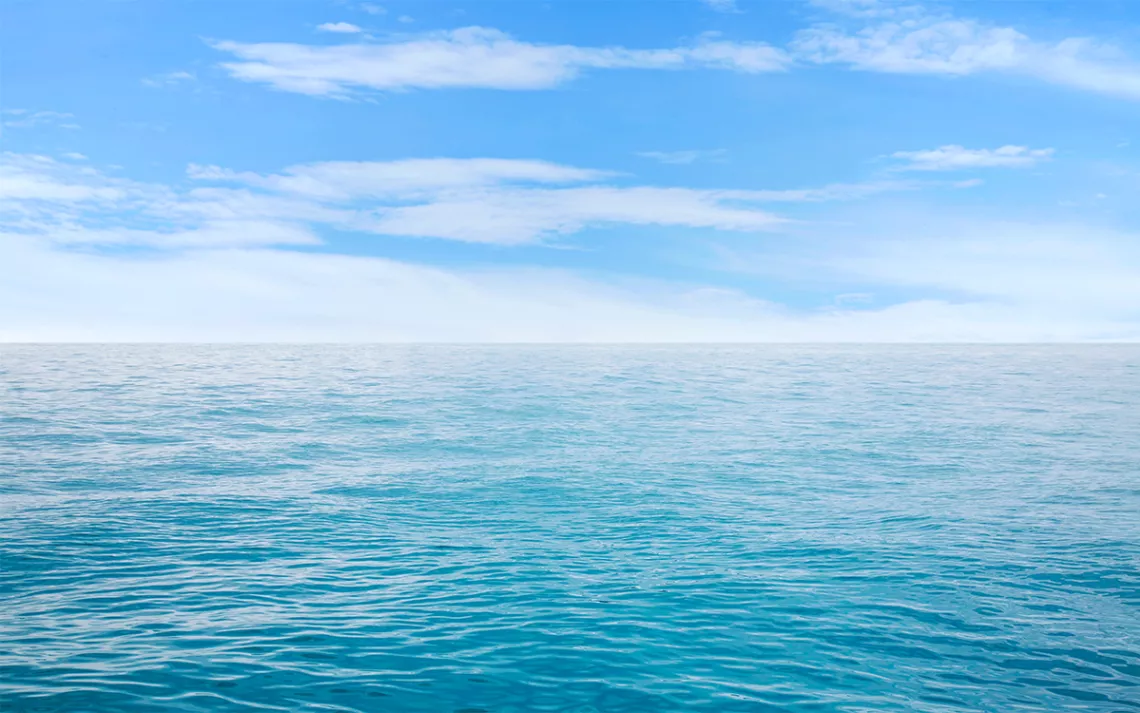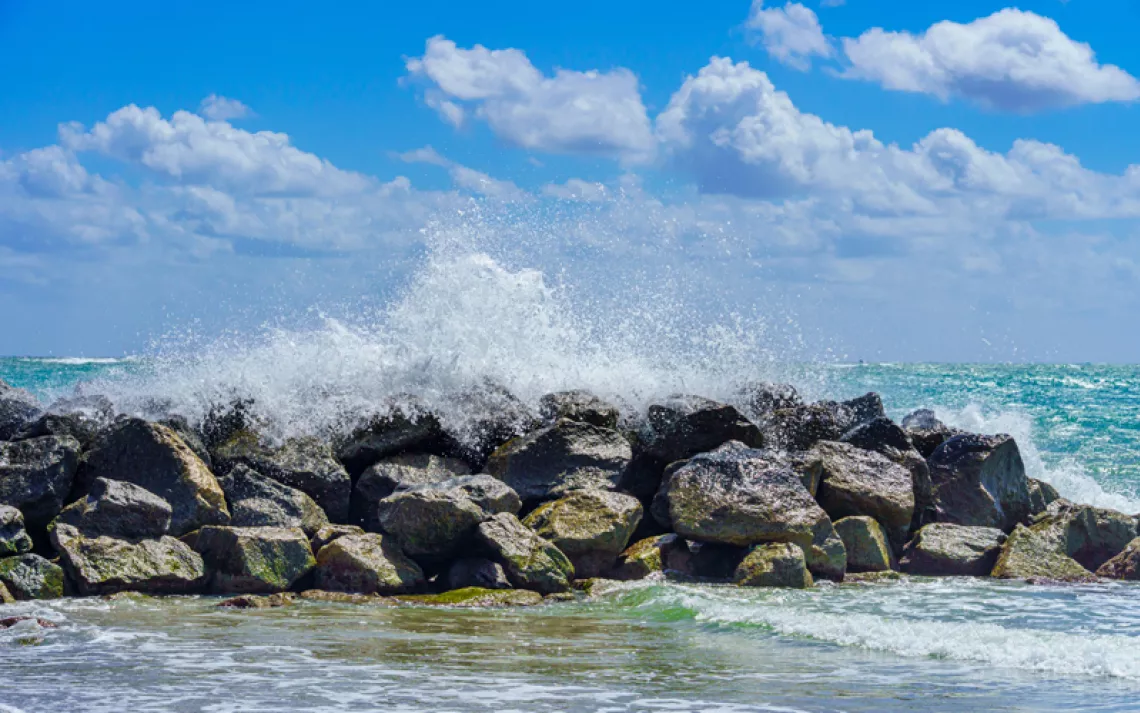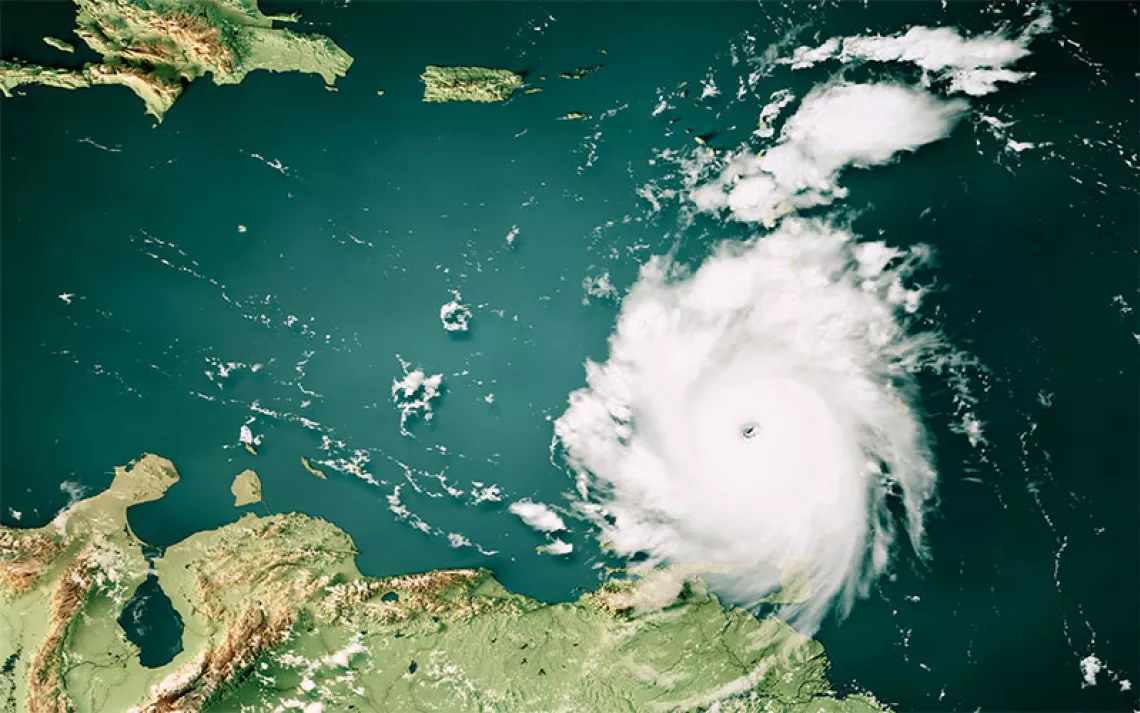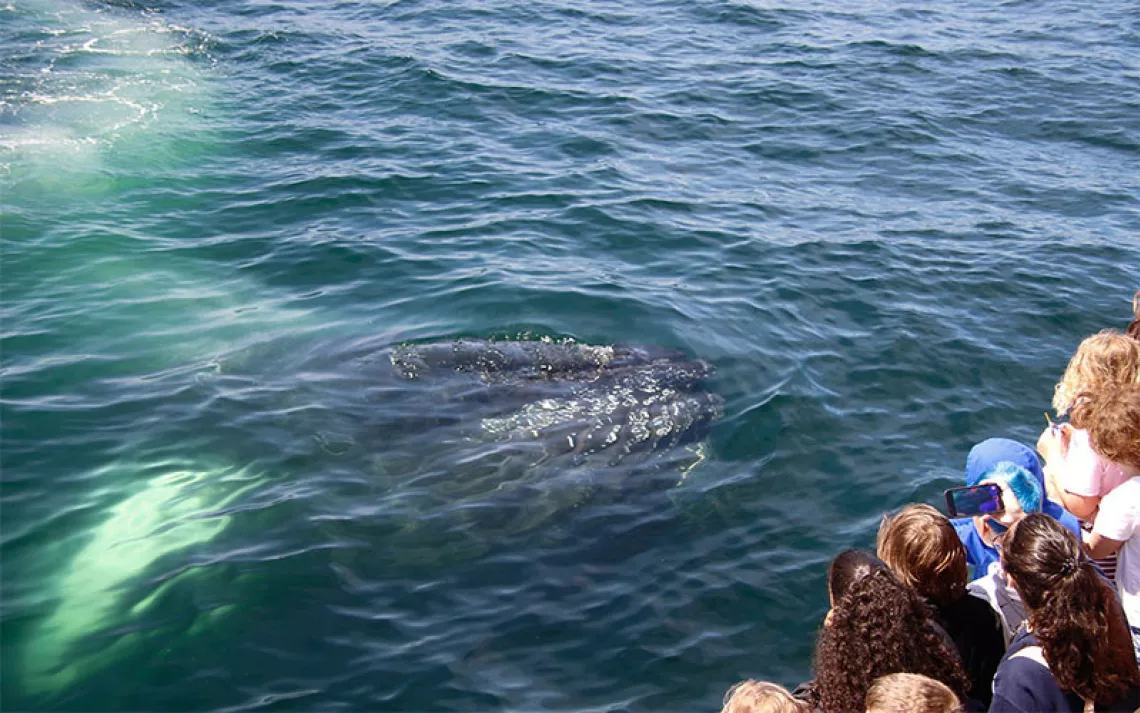Trump Views the Ocean as a Gas Station and a Garbage Dump
On June 9, people across the United States will be marching for the ocean

Photo by shuttertop/iStock
In 2000, I was onboard a BP offshore oil drilling rig in the Gulf of Mexico, where the roughnecks and roustabouts on the drill deck wore hard hats, steel-toed boots, and T-shirts reading “New Rig, New People, New Record”—referring to the depth of the underwater well they had completed. I asked the “company man” in charge what would happen if there were a blowout a mile or two down. “Well, David, guess we’ll find out when that happens,” he told me. Ten years later, I found out.
Shortly after the BP blowout that killed 11 oil workers, I was flying 2,000 feet above the Gulf watching at least a hundred dolphins and a humpback whale trapped and dying in the massive oil slick from the Deepwater Horizon. The Gulf’s sky was smudged with a dozen columns of black smoke from where BP and U.S. Coast Guard crews were burning off some of the surface oil. It was one of the worst environmental catastrophes in U.S. history.
A few reforms, however, did come out of that nightmare, among them somewhat tougher regulations on training, operations, and blowout preventer installation standards for offshore rigs. Now, those commonsense reforms are being undone by the Trump administration even as the administration pushes to open virtually all U.S. waters to offshore oil and gas drilling.
Today, March 9, marks the end of more than 20 federal “listening sessions” held around the country by the Interior Department to allow citizens to provide input on the proposal to allow oil drilling in more than 90 percent of U.S. coastal waters. Thousands of people from coast to coast turned out to say no to offshore oil drilling, though there’s little indication federal officials were listening. This administration seems to consider the ocean little more than a gas station and a garbage dump.
Which is why the Sierra Club has joined with more than 90 other groups, including the National Aquarium, NRDC, Greenpeace, Professional Association of Dive Instructors, Ocean Conservancy, Blue Frontier, Pacific Coast Federation of Fishermen’s Associations, and many other companies, explorers, scientists, students, youths, artists, and musicians to March for the Ocean on Saturday June 9, World Oceans Day weekend.
To join this growing list or get additional information on the D.C. anchor march and other ocean marches go here.
While the BP disaster was unprecedented in size, oil spills are all too common in the industry. I’ve witnessed other spills in the Persian Gulf and in my own home waters of the San Francisco Bay. I’ve cleaned up plastic debris from beaches and from the sea, including single-use polymers that never biodegrade. I’ve witnessed glacial retreat in Antarctica and Alaska and hurricanes intensified by climate change in Texas and Louisiana. As recently as 10 years ago, scientists warned me that while the trend lines were clear, you couldn’t attribute any single extreme weather event to climate change. Now the science has advanced to where two studies were able to attribute 15 to 38 percent of the unprecedented rainfall and flooding during last year’s Hurricane Harvey to human-caused climate disruption.
Meanwhile, unchecked CO2 emissions are also changing the very chemistry of the ocean. Ocean acidification (or OA) is shifting the pH of saltwater and making it harder for creatures such as various planktons, clams, crabs, and corals to pull the calcium carbonate out of the water to form the shells and skeletons they need to exist. The shellfish industry on the West Coast has already seen severe economic impacts that have made companies like the Hog Island Oyster Company and Taylor Shellfish indicator species for ocean acidification. Also, a warmer and more acidic ocean contains less dissolved oxygen, which contributes to an expansion of coastal "dead zones" and a die-off of algae, including species of phytoplankton that provide oxygen to our atmosphere.
Unfortunately, oil spills and climate change are just two factors impacting our living seas. The ocean and all of the life it sustains is under threat from industrial overfishing plus plastic and other forms of pollution. If current trends continue, the combination of overfishing and plastic pollution will result in there being more plastic than fish in the ocean (as measured by weight) by the middle of this century. That’s according to a report published by the World Economic Forum at Davos—not an organization known for its environmental alarmism.
On top of these problems, coastal sprawl and loss of habitat are reducing our chances to restore the damage we’ve already done as large estuaries, salt marshes, mangrove forests, sea grasses, oyster reefs, and coral reefs decline.
And still, I’m more frustrated than despairing, because we know what the solutions are. If we stop killing fish faster than they can reproduce, they tend to grow back. If we stop producing 100 million metric tons of single-use disposable plastic every year, fewer turtles and seabirds will choke on plastic. If we make a rapid transition to job-generating, 21st-century clean energy, we’ll stop digging the climate hole we find ourselves stuck in.
As recently as two years ago, the efforts of marine conservationists and their allies seemed to be paying off. At a global Our Ocean conference held by then–secretary of state John Kerry in 2016, President Obama reversed his earlier attempt to open up parts of the U.S. coastline to offshore drilling and instead protected the Atlantic and U.S. Arctic Ocean. Obama signed a bill targeting global pirate fishing while supporting a domestic fisheries policy that was beginning to restore depleted commercial species, and he worked with other nations to expand large marine protected areas that act as great reserves of biological diversity in an ocean at risk. For example, Obama expanded Papahanaumokuakea Marine Monument in northwest Hawaii—established by President George W. Bush in 2006—to half a million square miles, the largest protected range on the planet and home to over 70 percent of U.S. corals as well as endangered monk seals, sea turtles, and tiger sharks.
Then Donald Trump was elected president and quickly set to work undoing the achievements of his predecessor. He has promoted “clean, beautiful coal,” including coal-burning power plants that are the major contributor of mercury pollution in the ocean. His interior secretary, Ryan Zinke, is spearheading the five-year leasing plan to open almost all U.S. waters to drilling. Zinke has also proposed shrinking both onshore and offshore national monuments and national marine sanctuaries if they reduce opportunities for additional mining and drilling.
The new Trump budget proposes cutting funding for science, coastal collaborations, and law enforcement at the National Oceanic and Atmospheric Administration by over a billion dollars. Trump’s secretary of commerce, billionaire Wibur Ross, who oversees NOAA, sees nothing wrong with gutting this lead agency for the ocean.
While environmentalists have been working overtime on defense strategies, they’ve also been growing marine grassroots (or what we like to call “seaweed”) activism. On Saturday, June 9, the March for the Ocean will start with kayaks, working boats, and dragon boats on the Potomac River followed by a blue-tinged march past the White House to the Washington Monument. Sister marches will take place in cities nationwide, as will swims, paddles, and scuba dives in the Florida Keys and other coastal communities. As the March slogan has it, "The Ocean Is Rising And So Are We."
Or, as icon and National Geographic explorer-in-residence Dr. Sylvia Earle exhorts in one of the videos that march organizers are spreading online, “Use your power! We have a chance as never before to go from where we are to a much better, bluer place. Protecting the ocean really means protecting everything we care about. Now is the time, maybe as never again.”
 The Magazine of The Sierra Club
The Magazine of The Sierra Club



